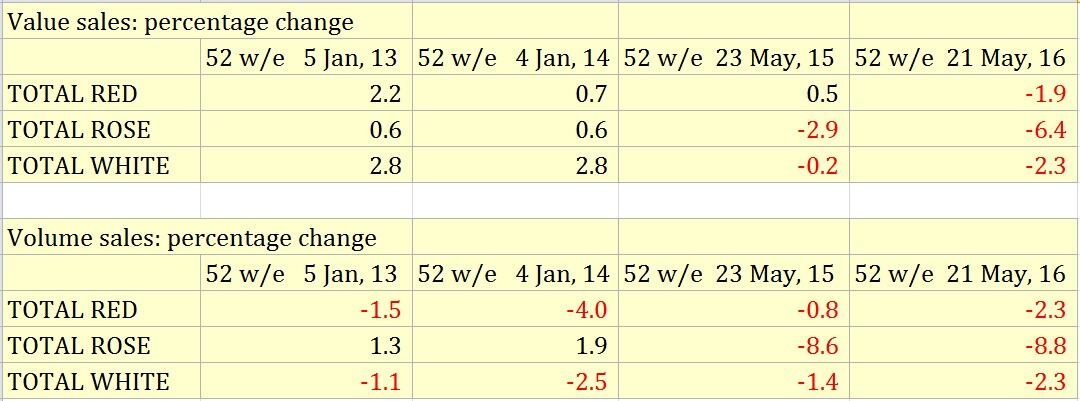Both volume and value sales of rosé wine declined in 2015 and 2016, according to figures from IRI.
The rise of flavored cider is a serious challenger to the category, says Mintel.
But the good news is that wine continues to boom in the US and other European countries.
Rosé has been blooming – but recent sales have declined
Rosé saw exponential growth in the first decade of the millennium, even proving recession-proof and growing from a niche segment into a mass market.
Its sweet taste has attracted consumers from outside the wine category, and also attracted a younger generation of consumers. Meanwhile, consumption occasions have broadened from a summer drink to one that is chosen year round.
But in the year ending May 2015, IRI data shows that rosé volume sales decreased by 8.6%. Figures for the year ending May 2016 showed volume sales declined 8.8%.
Value sales decreased 2.9% and 6.4% in the same periods, respectively. Sales of red and white wine are declining as well, but at a gentler pace.
Toby Magill, beer, wine and spirits specialist at IRI, told BeverageDaily: “Rosé wine is smaller and more niche than either white wine or red wine. It is still worth over half a billion pounds in the UK annually, however, it has been declining faster than the market for the last two years.
“This poor performance, along with its more niche status, will put it more at risk as retailers look to rationalize shelves, if it's not delivering scale or growth.
“However the color should not be cut back too far as there will be loyal customers who are rosé fans and who will be turned off if they cannot find a variant on the shelves.”

Mintel says that the rise of flavored cider – a twist on the trendy cider category – is proving to be a serious challenger to rosé wine, primarily because it appeals to a similar audience.
“The rise of flavored cider has undoubtedly had an impact on rosé wine sales,” Chris Wisson, senior drinks analyst at Mintel, told BeverageDaily.
“The success of Kopparberg and Rekorderlig has led to a raft of flavored cider innovation, both from established and new operators, which have enticed many drinkers.
“The popularity of both rosé wine and flavored cider peaks among under-35s, largely the result of their relatively sweet taste (red and white wine, meanwhile, do not have such a significant skew in usage by age).
“Many younger drinkers, and females in particular, are drinking flavored ciders rather than rosé wines.”
And the challenge does not only come from cider: it also comes from within the wine category as well.
“The recent growth of fruit wines such as Echo Falls' Fruit Fusions will also have had an impact, successfully targeting under-35s as the key audience with accessible wines which have clearly signposted flavor descriptions,” added Wisson.
Bucking the trend
So how can rosé brands fight back? Widening the consumer base and embracing a more premium message are two ways to ensure the drink’s continued success, says Wisson.
UK alcoholic drinks: Winners and losers
Winner: Prosecco, catering for celebrations but at a lower price point than Champagne.
Winner: Flavored cider, offering excitement in the cider category.
Loser: Rosé wine, facing challenges from flavored cider and flavored wine.
“Rosé wines will struggle to compete against the flavored cider and fruit wine markets when it comes to tapping into under-35 drinkers.
"Instead, rosé brands should look at appealing to older consumers more effectively by communicating premium messages, as only 15% of drinkers currently think that rosé is the most premium type of still wine.
"Emphasizing production processes (for example, terroir), vintages and aiming for a less sweet taste could help to resonate more effectively with older drinkers.”
US drinkers still love rosé
The good news is that rosé wine is still extremely popular in other markets such as the US.
“Rose is, in fact, thriving in other markets such as the US and France,” said Wisson. “Again, it is being driven by younger consumers who like the relatively sweet taste.
“In France, its strong performance is also due to being a bit less serious or stuffy than red and white wines, and it is also popular as an aperitif with all ages.
“There is a risk that rosé too could suffer from the rise of flavored ciders, but these markets are currently much smaller in the US and France.”
